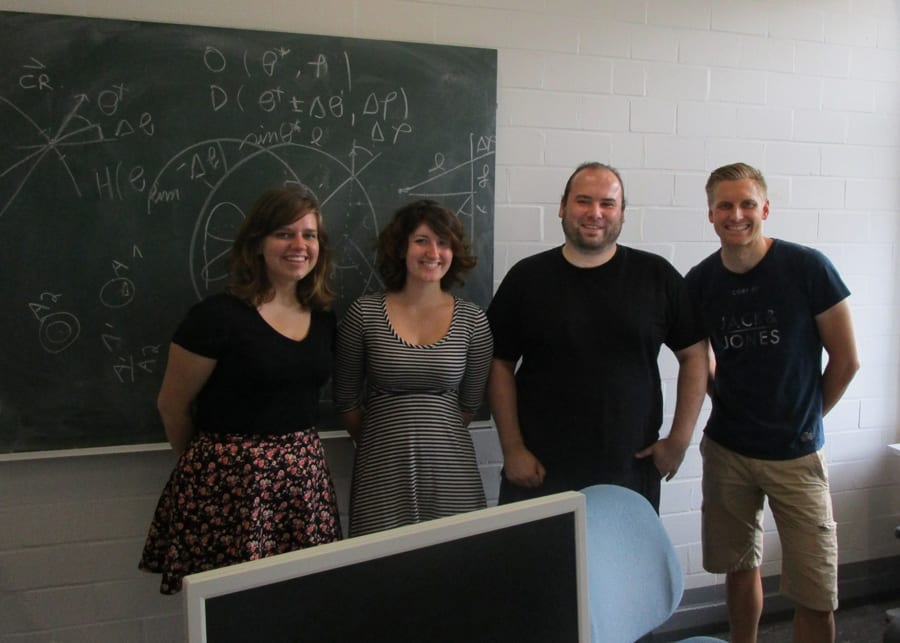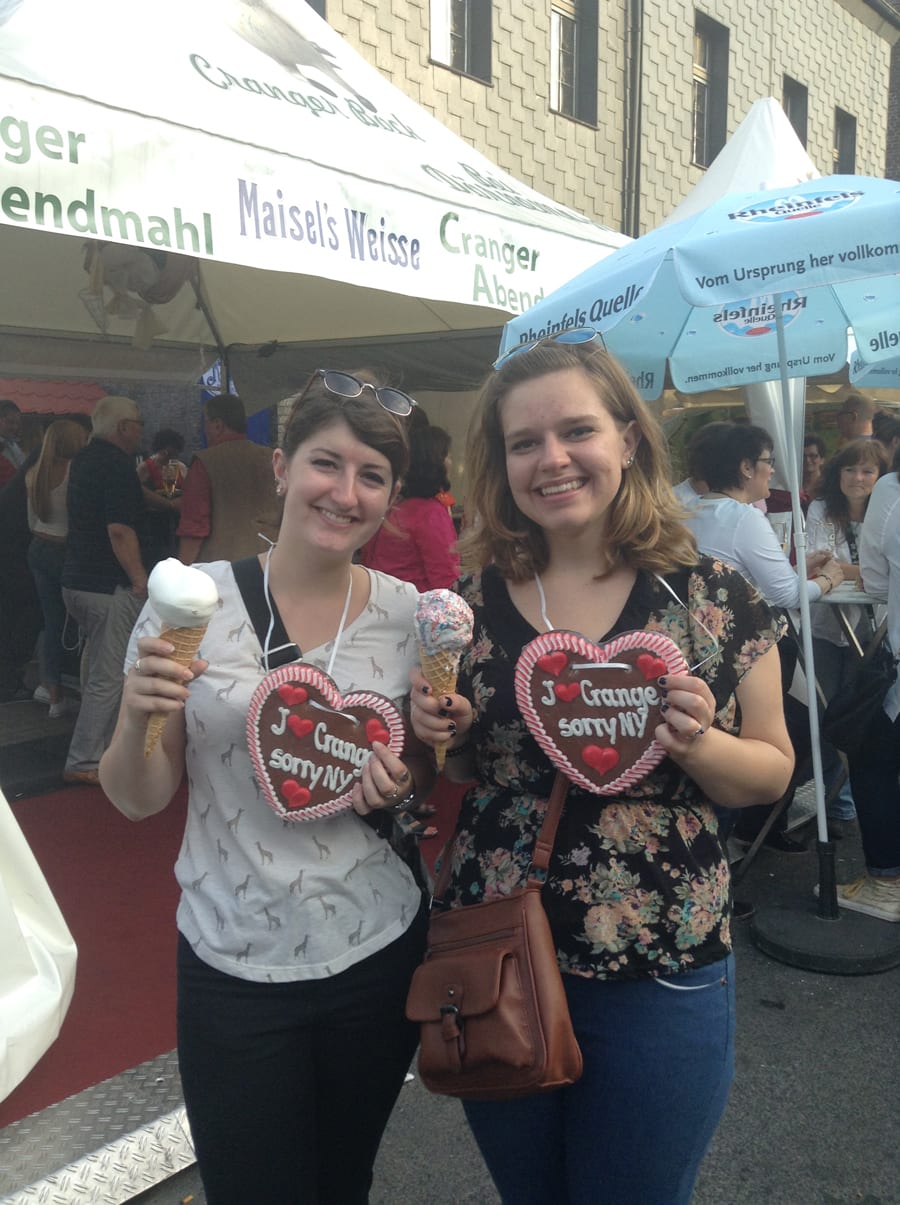International Research Experiences for Students (IRES) is a program funded by the National Science Foundation to support active participation of US undergraduates in international research projects. Laura Lusardi from New Richmond, WI, and Kelsey Kolell from Fond du Lac, WI, participated in the IRES program through UW–River Falls to work on IceCube research for the summer.

We are both third-year undergraduate students, studying physics at the University of Wisconsin–River Falls. This summer, we had the wonderful opportunity to travel to Germany through IRES to work with IceCube researchers. Even though we both ended up attending the same university, we took wildly different paths to get here.
Kelsey:
—–
Going into my junior year of high school, I had every intention of majoring in chemistry once I got to college. This quickly changed after I took a physics class and fell in love with the subject. I had a great teacher who was really enthusiastic about physics and wanted her students to love it as much as she did. I changed direction and started to investigate colleges for studying physics. My high school teacher recommended that I look into where she earned her masters in physics, which is how I ended up studying physics and math at the UW–River Falls. |
—–:tableclass1
Laura:
—–
Ever since I was a child, I’ve had a keen interest in astronomy. My interest piqued as I grew older, and I knew that astrophysics was what I wanted to pursue in college. Aside from UW–River Falls’ phenomenal physics program, its involvement with the IceCube project was one of my greatest motivations for attending school there. I had hoped to get involved with the project during the school year, but the process actually began before I even started my first year. It was all thanks to our professor, Dr. Surujhdeo Seunarine. He was on a committee for a scholarship that I was applying for, and during that interview I expressed my interest in astrophysics. It was also during this time that I met Kelsey, who turned out to be one of my colleagues and best friends. Later that winter, when applications were being accepted for the IceCube summer internship, he remembered my interest and advised both of us to submit an application. |
—–:tableclass1
Kelsey:
—–
When I came to River Falls, I had neither heard of the IceCube project nor had any knowledge of particle astrophysics. It just so happened that my advisor was Dr. Seunarine. Once he heard that I wanted to go into research, he told me about the project and about the chance to work on it over the summer. |
—–:tableclass1
—–
We were unsure whether we would get into the program due to our lack of experience, but we were both extremely surprised to find that we had in fact been accepted! This was the beginning of a spectacular year working with each other and IceCube. During our ten weeks abroad, we worked with two PhD students, Fabian Bos and Sebastian Schöneberg, at the Ruhr Universität Bochum. |
—–:tableclass1
Laura:
—–
I worked with Fabian on calibration of the detector using sun and moon shadows. Although IceCube’s main goal is to detect high-energy neutrinos, it is important to make sure that we can also use it to see the sun and the moon. IceCube may be a telescope, but it doesn’t have a lens through which to look, so we have to utilize a different method to see these celestial bodies. Both the sun and the moon create “shadows” by blocking incoming cosmic rays, which we see as a deficit of these cosmic rays within the detector. This information is then used as a calibration tool as well as to improve the angular resolution of the detector itself. |
—–:tableclass1
—–
Over the course of the summer, I worked on improving my programming skills while learning about the different aspects of the project. I focused on two distinct analyses used in calculating cosmic ray deficits. I learned how use the different tools for coding, how to pull and process the IceCube data, and how to write and run the programs that generate the plots. Near the end of the summer, I was able to write my own programs and even improve upon some of the existing ones to generate new plots of the shadows. |
—–:tableclass1
Kelsey:
—–
I worked with Sebastian on simulation of atmospheric neutrinos and muons. The goal for Sebastian’s project is to create simulations of the atmospheric neutrino flux at low energies. When cosmic ray particles enter the atmosphere, they interact with other particles creating a shower of secondary particles. With high-energy particles, the shower of secondary particles follows the same path as the primary particle, but for particles at lower energies, the showers branch out, like a cone of secondary particles, which casts a ring on the surface of the Earth. Each of these rings has a different percentage of secondary particles, some of which may hit the detector even if the path from the primary particle would have missed it and vice versa. My job was to figure out how many of the secondary particles would hit the detector at different angles. To do this, I made a lot of triangles and did a lot of trigonometry. Then, I was able to develop a procedure to find how much of the detector was being hit with the secondary particles. This is important, because if we can figure out how to account for the geometry without actually simulating it, we can save a lot of computing processing time.|
—–:tableclass1

By the end of the summer, we both made a lot of progress. Not only did we learn a lot about programming and physics, but more importantly we learned about working with graduate students and communicating with others about our work, all the while navigating a foreign country. It has been a truly remarkable summer. We have both learned so much during our time in Germany, met so many wonderful people, and made lots of new friends. This summer has opened our eyes to what it is really like to work in physics. We will both be able to use all the experiences that we gained this summer to help us achieve our dreams of becoming research physicists.